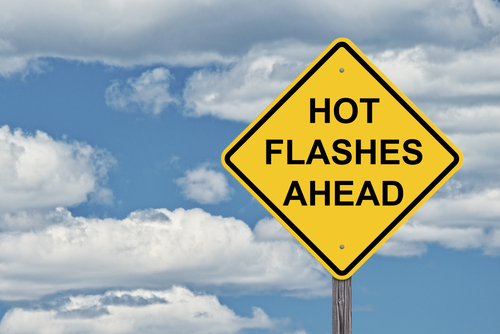Menopause is a normal part of life for women, but it can have a few unpleasant symptoms. It begins when a woman stops having periods, which usually happens in the middle of a woman’s forties or fifties. Some women go through it at an earlier age. That is rare, but most common in women who smoke, suffer from thyroid disorders, or go through certain medical procedures. The symptoms are similar regardless of when menopause starts, including the infamous and unpleasant hot flashes.
What are Hot Flashes?
Many menopausal women experience hot flashes, which are sudden feelings of heat. They usually occur around the chest and head and last for a couple of minutes before fading away. Some people experience chills after the heat ends.
Do Hot Flashes Cause Other Complications?
Hot flashes are more common at night than during the day, which means that they often cause women to wake up at night. Most women are able to go to sleep fairly quickly after the flash ends, but the interrupted sleep does tend to add up.
When Do Hot Flashes Start?
Women usually experience their first hot flashes in the years before they begin menopause. The exact age will vary from one woman to the next based on a variety of personal factors.
What Causes Hot Flashes?
A hot flash begins when the blood vessels widen, which allows more blood to pass through them. That extra blood causes sudden feelings of heat. Researchers are not clear on the details of why that process occurs, but it seems to be due to hormonal changes and the body’s efforts to control its temperature.
Are Hot Flashes Common?
The vast majority of women will experience hot flashes at some point. Roughly four out of five women will have them, although some people will have many more of them than others.
What are the Risk Factors for Hot Flashes?
Most women will experience hot flashes, but there are several factors that increase the risk of both having hot flashes in general and of having more intense hot flashes.
How Long Will Hot Flashes Last?
Menopausal hot flashes can go on for a long time, but they can also end quickly. It can vary from woman to woman. Those who are at a higher risk of developing hot flashes tend to have them for longer periods. Some women will only have them for a few years, while others can have them for more than a decade.
What are the Treatment Options?
We can use medications to help deal with hot flashes. Hormone therapy with estrogen is the most common choice, but it isn’t the right choice for everyone. Alternative medications can be appropriate for some of those cases, and there are also home treatments that can provide some relief.
What are Safe Home Treatment Methods?
There are a few ways that some people can get some relief without medications. Weight loss and exercise can promote general health and may be able to help with hot flashes. There is also some recent evidence to suggest that cognitive-behavioral therapy can help people to cope. Simple lifestyle changes, such as controlling the temperature of a home, can make things more comfortable.
How Long Does Treatment Take?
Treatment times can vary but most women who opt for hormonal treatments use them for short periods of just a few years. Some women do need to keep at it for longer periods, but that is rare.
Get Started with Treatment
Hot flashes are a fact of life for many women, but we have the tools to deal with them. The only way to start getting better is to get in touch with physicians who have experience treating hot flashes. SLMA’s team includes several physicians that specialize in OB-GYN care that can help to guide patients through the treatment process. We encourage women who are suffering from hot flashes to make an appointment so they can get some relief.

